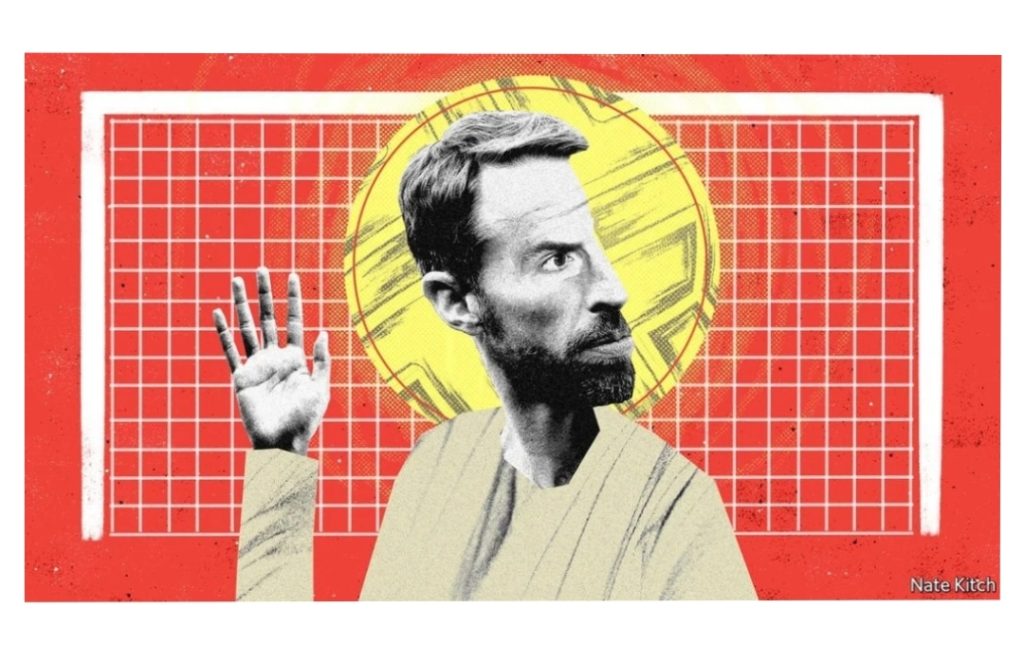ENGLAND IS ENJOYING a communitarian moment, thanks to football, its national sport. And the impresario of the moment is Gareth Southgate, England’s manager and currently its most popular person. He not only forged what has too often in the past been a collection of prima donnas into a well-oiled machine that beat its nemesis, Germany, to get into the Euro 2020 quarter-finals and then, in extra time, beat a brilliant Danish team to get into the final on July 11th. He also understood the uniting national power of collective joy and despair. “I tell them that when you go out there, in this shirt,” wrote Mr Southgate in an open letter to the public on June 8th, “you have the opportunity to produce moments that people will remember forever.”
This togetherness is palpable, not just because England has reached the tournament’s final for the first time ever, but also because it is in stark contrast to the divisions that have marked Britain in recent years. The 2016 Brexit referendum did more than just tear both the country and the Tories asunder. It also revealed that Britain was already much more divided than it realised: remember those conversations when Remainers (or Leavers) declared that they couldn’t understand how the result had been so close, when no one they knew voted Leave (or Remain)? The pandemic offered some unity, as Britons came out on the streets on Thursdays to “clap for carers” and then quietly exulted at the improbably impressive vaccine roll-out. But it also forced people to isolate in their homes. One of the most thrilling things about the semi-final was the spectacle of 60,000 fans roaring their hearts out in Wembley Stadium as if the pandemic had never happened.
For decades now, common life in Britain has been withering. The English, in particular, have been sorting themselves on the basis of income and education. Danny Dorling, a geographer at Oxford University, has assembled evidence that people with more of both moved physically apart from those with less in every decade from 1970 to 2000. The English like to think that Mr Southgate’s multicultural, knee-taking team proves that, with the exception of a few thugs, the country is cheerily post-racial. In fact, England suffers just as much from white flight as America does.
Draw a 100km ring around London, the supposed capital of multiculturalism, to include the most commutable towns, and you will find minorities clustered in the centre and white Britons towards the periphery. Levelling things out would mean moving 58% of those within this perimeter—more than would be needed to do the same in the average American city. The white population of London fell by more than half a million in the 2000s, even as its total population rose. In 2001, only a quarter of non-whites lived in areas where whites were a minority. Now, almost half do.
Institutions that once united the country are withering, too. The English are much less inclined to join voluntary organisations than they used to be, with blue-collar workers leading the exodus. Knowledge-intensive companies are less likely than manufacturing companies to bring workers from differing classes together under the same roof. Half the children poor enough to qualify for free school meals are educated in just a fifth of schools.
Classical liberals might point out that much of this segregation is voluntary. But there is plenty to suggest that many people feel that their individual decisions are adding up to the loss of something important. About half of Britons tell pollsters that Britain is the “most divided it’s been during my lifetime”. In his new book, “Fractured”, Jon Yates, the executive director of the Youth Endowment Fund and a former Tory special adviser, marshals evidence that societal segregation is imposing significant costs. It denies children from poorer families access to the networks and contacts that would help them get ahead in life. When voters have no friends who vote for the other lot, democracy is weakened. And when people feel little in common with their fellow citizens, they are less likely to vote for the taxes that keep the welfare state alive.
How to solve a problem that flows so directly from private choices? Mr Yates is doing his bit: he runs a scheme that takes thousands of teenagers every year, divides them into groups of 12, from varying backgrounds and ethnicities, and engages them in challenging physical activities such as hiking and camping. The intense memories formed by these (sometimes testing) experiences can build the sorts of bonds Mr Southgate wrote about to his lads, even though the nation is not watching with heart in mouth.
Mr Yates has other intriguing ideas: obliging young people to do community service as part of their education; establishing local groups for new parents to bond over the way their lives have just changed; and encouraging the recently retired to meet and chat about what to do with their days. Bagehot finds it easy enough to come up with more: a voluntary army of young digerati to help older people with their devices? Or of retired people to mentor inner-city kids? Putting such ideas into practice would be far from easy. The “Big Society” promised by David Cameron when he became prime minister in 2010 fizzled out as his government turned its attention to cutting the budget deficit. It would also raise tough questions, in particular how much compulsion to bring to bear. Too much, and participation is likely to be grudging; too little, and those who would benefit most will sit the whole thing out.
Many hands
But there are examples from which to draw inspiration. Britain did a remarkable job of reweaving the national fabric in the late 19th and early 20th centuries, with the creation of hundreds of voluntary organisations. Between 1981 and 2008 the number of Danish voluntary organisations rose by a third, even as it fell elsewhere, and the number of Finns involved in sports clubs grew by a similar amount. After a long period in which they focused on the politics of freedom, Britain’s elite need to take a leaf out of Mr Southgate’s book, and turn their attention to togetherness.
By The Economist





